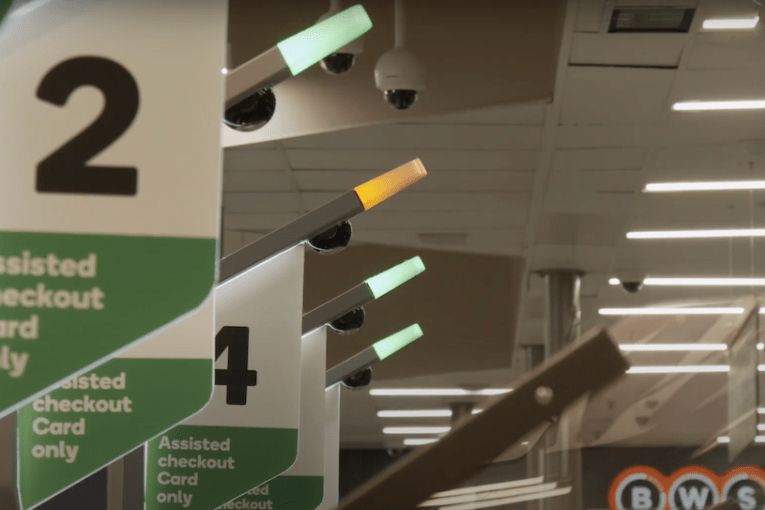Australian retailers report best annual growth since 2001

Australian retailers experienced bumper sales in November due to Victoria’s reopening and the Black Friday and Cyber Monday online sales events.
Data released by the Australian Bureau of Statistics on Monday shows monthly retail turnover surged 7.1 per cent in November to reach $31.65 billion – a 13.3 per cent increase on the same time last year.
The sharp rise was the largest annual increase in nominal retail sales since July 2001, when the introduction of the GST pushed up retail prices, and the second-strongest result since January 1989.
The major driver? Victorians hitting the shops after retailers were allowed to resume physical trading on October 27.
And the Black Friday and Cyber Monday online sales also helped, with consumers splashing out on the latest Xbox, PlayStation and iPhone releases.
Monthly retail turnover, which excludes pubs and clubs and travel, surged by a massive 22.4 per cent in Victoria and by 2.6 per cent elsewhere, with all states except South Australia reporting an increase in retail turnover.
“At the industry level, rises were recorded in household goods retailing (12.7 per cent), clothing, footwear and personal accessory retailing (26.7 per cent), other retailing (7.9 per cent), department stores (21.1 per cent), and cafes, restaurants and takeaway food services (6.7 per cent) in November 2020,” the ABS said in a statement.
“The release of new games consoles and new iPhones added to sales in household goods and other retailing, while Black Friday sales also contributed to the increase across a number of industries.”
Australian Retailers Association CEO Paul Zahra described the figures as “outstanding” and said he expected the strong momentum to continue into next month’s ABS sales figures for December.
“With many discretionary retailers making up to two-thirds of their yearly profits during this period, this result will help replenish cash reserves allowing many retailers to enter 2021 on a more stable footing,” Mr Zahra said.
“It’s pleasing to see year-on-year increases across the major categories with household goods up $1.3 billion or 28 per cent, clothing, footwear and personal accessories up more than $400 million or 18 per cent, and department stores up $254 million or 16 per cent.”
- Year in review: Return to suburbs and online shopping define past year in retail
Separate transaction data from ANZ Bank, meanwhile, suggests retailers generated slightly less revenue in December than in November.
This is partly because the Black Friday and Cyber Monday sales will have encouraged some consumers to bring forward their spending, rather than increase their overall festive outlay.
“ANZ data suggests that while December sales are likely to be down on November, the end of 2020 didn’t represent a big reversal of November’s sales growth,” ANZ economists Adelaide Timbrell and David Plank wrote in a note.
“ANZ-observed spending during the Christmas rush (December 17-24) matched the week of Black Friday, and while there was some rebalancing of spending towards entertainment, travel and services, we expect annual retail growth to be stronger than pre-pandemic for a little longer.”
The bumper Christmas sales rounded out a positive year for retail.
Forced to spend more time indoors and unable to travel overseas, Australians spent big on household goods and electronics to spruce up their homes.
But economists believe the current level of retail spending is “unsustainable”.
Although the ABS figures show online sales accounted for 11 per cent of total retail turnover in November, BIS Oxford Economics chief economist Sarah Hunter said people would return to physical shops as restrictions were eased and vaccines rolled out.
“This will benefit cafes, restaurants and clothing, and will weigh on household goods and food, both of which have been disproportionate beneficiaries over the last year,” she said.
“More broadly, there is also likely to be a shift back towards spending on services, particularly travel and tourism; as a result, after a comparatively strong 2020, we expect growth in retail turnover to lag behind total household spending in 2021.”
Indeed APAC economist Callam Pickering, meanwhile, said the planned reduction in government support payments could take the wind out of consumer spending in coming months.
“The ongoing taper of JobKeeper and JobSeeker will create a more difficult environment for the retail sector in the first half of 2020,” he said.
“The high rate of spending, that has seen most industries and states with double-digit annual growth, is surely unsustainable.”










